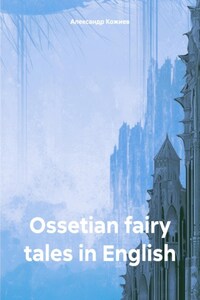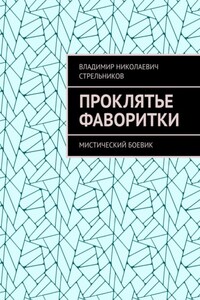Reading rules
A brief table to read the Ossetian proper names and terms used in this book.
Alphabet
Oss. alph. letter
Correspondence in the English alphabet (or explanation)
Correspondence in the French alphabet (or explanation)
كلمة مكافئة في اللغة العربية
А а
A a, like ar in far in English
A a
آ
Æ æ
Æ æ
is pronounced like the English accentless “a”, as in the words above, amount, aside. It retains this pronunciation even under accent. In contrast to the open clear “a” it can be pronounced as “a” “through the teeth”.
It is important to distinguish between a and æ:
dar – keep; dær – even, too
dum – say, say; dæm – you have
Æ æ
أ
Б б
B b
B b
ب
В в
V v
V v
ڤ / ف
Г г
G g
like g in go
G g
ج بالمصير، أو گ باللهجة العراقية
Гъ гъ
Gh gh
The gh sound is a phonatory correspondence of the deaf h. It is close to Tajik ғ, French r
Gh gh
Le son gh est une correspondance phonatoire du h sourd. Il est proche du tadjik ғ, du français r
غ
Д д
D d
D d
د
Дж дж
J j
J j
ج
Дз дз
Dz dz
Dz dz
دْز
Е е
Ye ye (like in the word “Yes”)
Ye ye
يَ
Ё ё
Yo yo
Yo yo
يو
Ж ж
Zh zh
like s in pleasure
Zh zh
ج مثل ج باللهجة المغريبية
З з
Z z
Z z
ز
И и
I i (Y y)
I i (Y y)
ي
Й й
Y y
Y y
ئ
К к
K k
K k
ك
Къ къ
K’ k’
to pronounce k’, you should try to pronounce the sound k, but abruptly interrupt, as if firing the sound. In this case, the air is not released, as when pronouncing “k”
K’ k’
pour prononcer “k”, il faut essayer de prononcer le son k, mais l'interrompre brusquement, comme si l'on tirait sur le son. Dans ce cas, l'air n'est pas relâché, comme lors de la prononciation du “k”
ﯖ
Л л
L l (always a harsh sound)
L l (toujours un son dur)
ل (صوت قوي دائمًا)
М м
M m
M m
م
Н н
N n
N n
ن
О о
O o
O o
او
П п
P p
P p
پ
Пъ пъ
P’ p’
when pronouncing p’, the larynx closes for a while, and the explosion is carried out by the air supply that was in the supraglottic region
P’ p’
lors de la prononciation de p’, le larynx se ferme pendant un moment et l'explosion est réalisée par la réserve d'air qui se trouvait dans la région supraglottique
ڥ
Р р
R r
Like the solid sound r in Spanish, Italian, Russian
R r
Comme le son solide r en espagnol, italien, russe
ر
С с
S s
S s
س
Т т
T t
T t
ت
Тъ тъ
T’ t’
during pronunciation, the larynx closes for a while, and the explosion is carried out by the air supply that was in the supraglottic region
T’ t’
lors de la prononciation, le larynx se ferme pendant un certain temps et l'explosion est réalisée par la réserve d'air qui se trouvait dans la région supraglottique.
ڟ
حرف ط متوتر
أثناء النطق تنغلق الحنجرة لفترة، ويتم الانفجار عن طريق إمداد الهواء الذي كان موجودًا في المنطقة فوق المزمارية
У у
U u
Like oo in moon
A long vowel
The combination of wæ (ua) is an open syllable
U u
Comme dans le mot
Une voyelle tongue
La combinaison wæ est une syllabe ouverte.
و
صوت "و" طويل
Ф ф
F f
F f
ف
Х х
H h
H h
خ
Хъ
Q q
for the pronunciation of q, one should try to pronounce h, but, also, by abruptly interrupting, without letting the air out, as when pronouncing q. (See earlier).
Q q
pour la prononciation de q, il faut essayer de prononcer h, mais aussi en interrompant brusquement, sans laisser sortir l'air, comme lorsqu'on prononce q. (Voir plus haut).
ق
Ц ц
C c
C c
تْس
Цъ цъ
C’ c’
when pronouncing the sound, the larynx closes for a while, and the explosion is carried out by the air supply that was in the supraglottic region
C’ c’
lors de la prononciation du son, le larynx se ferme pendant un certain temps et l'explosion est réalisée par la réserve d'air qui se trouvait dans la région supraglottique.
ڗ
عند نطق الصوت ڗ أو تْس‘، تنغلق الحنجرة لفترة، ويتم الانفجار عن طريق إمداد الهواء الذي كان في المنطقة فوق المزمارية
مثل تْس متوتر
Ч ч
Č č
Č č
تْش \ چ
Чъ чъ
Č’ č’
when pronouncing the sound, the larynx closes for a while, and the explosion is carried out by the air supply that was in the supraglottic region
Č’ č’
lors de la prononciation du son, le larynx se ferme pendant un certain temps et l'explosion est réalisée par la réserve d'air qui se trouvait dans la région supraglottique.
ݗ
عند نطق الصوت ݗ
أو تْش‘ (تْش متوتر)، تنغلق الحنجرة لفترة، ويتم الانفجار عن طريق إمداد الهواء الذي كان في المنطقة فوق المزمارية
Ш ш
Š š
Š š
ش
Щ щ
Shush shsh
Shsh shsh
ش
"ش" في كلمة شرطة او شوكة
Ы ы
Y y / ɨ
Y y / ɨ
ي بعد ص
Э э
E e
Like e in end
E e
Come
أيِه
Ю ю
Yu yu
Yu yu
يُو
Я я
Ya ya
Ya ya
يَا
About the author
Kozhiev Alexander Yurieviç – is a postgraduate student of MEPhI, a teacher of Arabic at the Foreign Language Learning Center (FLLC) of the Diplomatic Academy of the Ministry of Foreign Affairs of the Russian Federation. Graduated from:
– Diplomatic Academy of the Ministry of Foreign Affairs of the Russian Federation, during the studies mastered Arabic and French languages;
– National Research Nuclear University MEPhI, confirmed knowledge of Spanish;
– MGIMO of the Ministry of Foreign Affairs of the Russian Federation (double-degree Master's program with the Italian University of Cagliari), confirmed knowledge of Italian and German languages.
Educated in economics and politics, I still find myself looking back at Ossetian folk art. Ossetian fairy tales and tales have left the greatest imprint on me. These works should not be understood literally, but allegorically, because so much wisdom is hidden even where it seems to find little. All works of Ossetian literature are written in an allegorical way, and the reader has to guess it for him/herself.
I decided to write Ossetian fairy tales in English to better popularize Ossetian literature on a global scale. This will not only preserve cultural heritage, but also bring the wisdom of works of Ossetian folklore to a wider audience, opening new horizons for understanding and perception of Ossetian culture. Subsequently, Ossetian tales will be translated into other foreign languages (Arabic, Persian, French, Spanish, Portuguese, German, Swedish and Hungarian).
Kozhiev George Yurieviç provided great help in collecting Ossetian fairy tales, recording them, as well as in editorial work, thanks to which we can enjoy the narration from the words of elderly people who talked about previously unwritten fairy tales.
Introduction
Ossetian tales are a wonderful world where the history, culture and philosophy of the people are intertwined. They are an integral part of Ossetian spirituality and are passed on from generation to generation, retaining their relevance and significance.
The Nart Saga is the crown jewel of Ossetian oral folk tradition. These epic poems recount the exploits of the Narts – heroic characters with supernatural powers. The Narts symbolize strength, wisdom and justice, and their stories inspire and teach.
Among the characters, Soslan (a fearless warrior known for his strength and skill), Batraz










